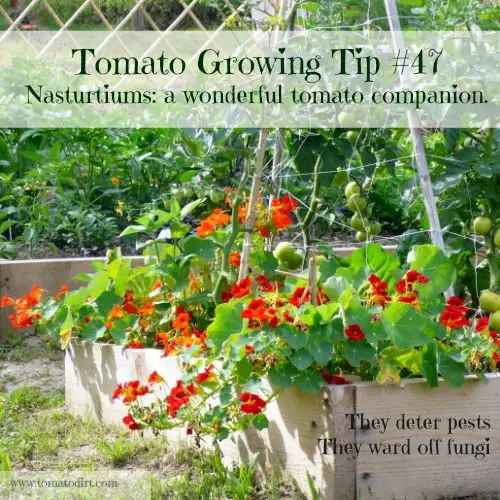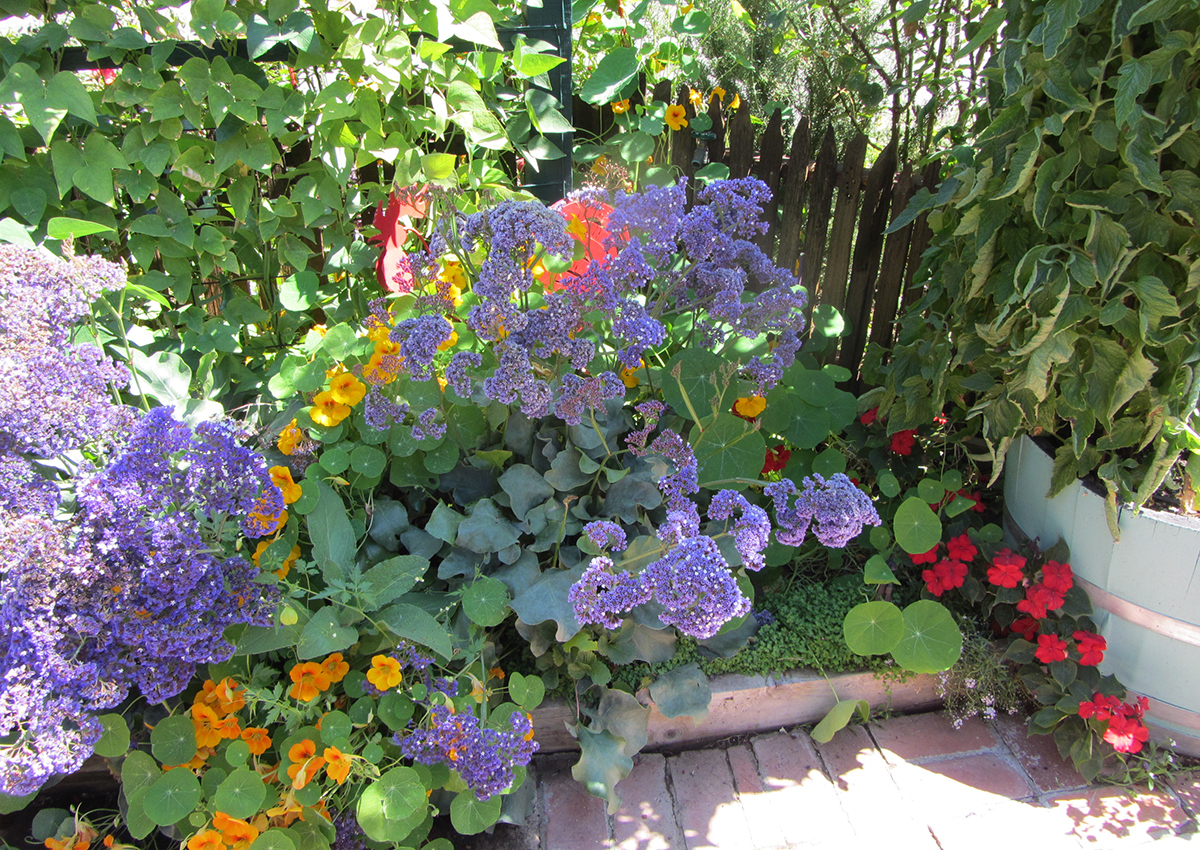Nasturtium: The Versatile Companion Plant That Does It All
Nasturtium: The Versatile Companion Plant That Does It All
Nasturtiums are a beautiful and versatile plant that can be grown in a variety of settings. They are edible, attractive to pollinators, and can even help to repel pests. In this blog post, we will explore the many benefits of nasturtiums and how to use them in your garden.
Introduction
Nasturtiums (Tropaeolum majus) are a member of the nasturtium family, which also includes watercress and capers. They are native to South America, but have been cultivated in Europe and Asia for centuries. Nasturtiums are a tender annual, which means that they will die at the end of the growing season. However, they are relatively easy to grow and can be started from seed indoors or outdoors.
Benefits of Nasturtiums
There are many benefits to growing nasturtiums in your garden. Here are just a few:
- Edible: The flowers, leaves, and seeds of nasturtiums are all edible. The flowers have a peppery taste, while the leaves are similar to watercress. The seeds can be pickled or used in salads.
- Attract pollinators: Nasturtiums are a favorite of pollinators, such as bees, butterflies, and hummingbirds. Planting nasturtiums in your garden can help to increase the number of pollinators in your area.
- Repel pests: Nasturtiums can help to repel a variety of pests, including aphids, whiteflies, and squash bugs. This is because nasturtiums produce a chemical that is toxic to these pests.
- Improve soil quality: Nasturtiums are a good source of nitrogen, which can help to improve the soil quality in your garden. When the nasturtiums die at the end of the season, their leaves and stems will decompose and add nutrients to the soil.
- Decorative: Nasturtiums are a beautiful and colorful plant that can add a splash of color to your garden. They come in a variety of colors, including yellow, orange, red, and pink.
How to Grow Nasturtiums
Nasturtiums are relatively easy to grow. They can be started from seed indoors or outdoors. If you are starting them indoors, sow the seeds 4-6 weeks before the last frost date. If you are starting them outdoors, sow the seeds directly in the ground after the last frost date.
Nasturtiums prefer full sun, but they can tolerate some shade. They will grow in most types of soil, but they prefer well-drained soil. Water nasturtiums regularly, especially during hot weather.
Companion Planting with Nasturtiums
Nasturtiums are a great companion plant for a variety of other plants. They are especially beneficial for tomatoes, cucumbers, and squash. Nasturtiums can help to deter pests from these plants, and they can also help to improve the soil quality.
Here are some other good companion plants for nasturtiums:
- Basil: Basil attracts beneficial insects, which can help to control pests.
- Marigolds: Marigolds repel nematodes and other soil-borne pests.
- Peas: Peas fix nitrogen in the soil, which can benefit nasturtiums.
- Spinach: Spinach and nasturtiums can be planted together to help suppress weeds.
Conclusion
Nasturtiums are a versatile and beneficial plant that can be grown in a variety of settings. They are edible, attractive to pollinators, and can help to repel pests. If you are looking for a beautiful and easy-to-grow plant for your garden, nasturtiums are a great option.
Nasturtiums are beautiful, edible flowers that can also be a great asset to your vegetable garden. They are known for their pest-repelling properties, and they can also attract beneficial insects like pollinators. If you're looking for a way to improve the health and productivity of your garden, nasturtiums are a great option.
Here are some of the benefits of using nasturtiums as companion plants:
- They can help to deter pests like aphids, whiteflies, and squash bugs.
- They can attract beneficial insects like ladybugs and hoverflies, which help to control pests.
- They can improve the flavor of vegetables like tomatoes and cucumbers.
- They can help to retain soil moisture.
If you're interested in learning more about how to use nasturtiums as companion plants, I recommend visiting Gardenia Inspiration. This website has a wealth of information on the topic, including a list of the best companion plants for nasturtiums.
FAQ of nasturtium as companion plant
Question 1: What are the benefits of using nasturtium as a companion plant?
Answer: Nasturtiums are a great companion plant for many other types of vegetables. They help to deter pests, attract beneficial insects, and improve the soil.
- Deterrent to pests: Nasturtiums have a peppery scent that repels many common garden pests, including aphids, whiteflies, and cabbage moths.
- Attract beneficial insects: Nasturtiums attract beneficial insects, such as ladybugs, hoverflies, and parasitic wasps. These insects help to control pests in the garden.
- Improve the soil: Nasturtiums are nitrogen-fixing plants, which means they can help to improve the nitrogen content of the soil. This can benefit other plants in the garden.
Question 2: What vegetables are good companions for nasturtiums?
Answer: Nasturtiums are good companions for many vegetables, including:
- Carrots: Nasturtiums help to repel carrot flies, which can damage carrots.
- Cucumbers: Nasturtiums help to repel cucumber beetles, which can also damage cucumbers.
- Peas: Nasturtiums help to attract pollinators, which are important for peas.
- Tomatoes: Nasturtiums help to repel nematodes, which can damage tomatoes.
- Lettuce: Nasturtiums help to repel slugs and snails, which can damage lettuce.
Question 3: How far apart should nasturtiums be planted?
Answer: Nasturtiums should be planted about 12 inches apart. This gives them enough space to grow and spread.
Question 4: How much sun do nasturtiums need?
Answer: Nasturtiums need full sun to thrive. They will not bloom well if they do not get enough sunlight.
Question 5: How do you care for nasturtiums?
Answer: Nasturtiums are relatively easy to care for. They need regular watering, but they do not like wet feet. They also need to be fertilized every few weeks.
Image of nasturtium as companion plant
- Nasturtium and beans: Nasturtium is a great companion plant for beans because it attracts beneficial insects that help to control pests. It also helps to suppress weeds and improve soil quality.

- Nasturtium and carrots: Nasturtium helps to deter pests from carrots, such as carrot flies and aphids. It also helps to improve the flavor of carrots.
- Nasturtium and tomatoes: Nasturtium helps to deter pests from tomatoes, such as tomato hornworms and whiteflies. It also helps to attract pollinators, which help to improve the yield of tomatoes.

- Nasturtium and roses: Nasturtium helps to deter pests from roses, such as aphids and spider mites. It also helps to improve the drainage around roses, which can help to prevent diseases.

- Nasturtium and lavender: Nasturtium helps to attract pollinators, which help to improve the yield of lavender. It also helps to deter pests from lavender, such as cabbage moths and Japanese beetles.

Post a Comment for "Nasturtium: The Versatile Companion Plant That Does It All"